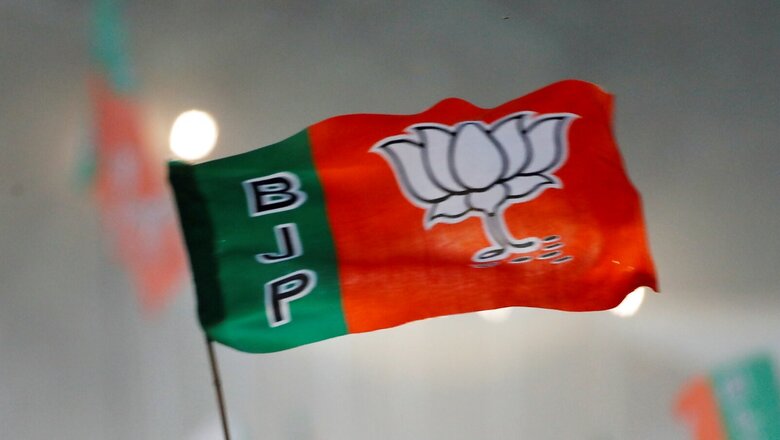
views
Indian democracy is moving forward and this is because of a shift in electoral politics, from majoritarian to one where different social groups can make or break political fortunes.
As a result, every political party in India now realises the importance of politician-cum-social engineers who can repair relations and build social alliances for their parties with different castes, communities and religious groups for political mobilisation.
These political-social engineers need not be the main face of the party but are the brains behind organising the electoral campaign for their party. Their sole aim—enhance the electoral performance of their party.
The BJP Strategy
The Bharatiya Janata Party (BJP), which is in power in poll-bound Uttar Pradesh in alliance with some other parties, has several such political-social engineers. Home Minister Amit Shah has proved to be an efficient social engineer for the party, ensuring electoral success in several states.
For 2022 Uttar Pradesh election, the BJP has entrusted the task of social engineering to Dharmendra Pradhan, who is also the Union Minister of Education and was earlier in-charge of the petroleum and natural gas portfolio. Dharmendra Pradhan and his team are crafting new and rebuilding old social alliances ahead of the election. Since 2014, the BJP has worked at reaching out to OBCs or Other Backward Classes—not known as traditional BJP voters—and the party’s success in 2017 UP election illustrates the power of social engineering.
Even as the BJP consolidates its position among OBCs—Prime Minister Narendra Modi’s revamped Cabinet now has 27 ministers who belong to backward classes—Pradhan and his team are working at a micro level, building associations with as many social groups as possible before the state goes to polls next month.
His team is working at diluting the dissatisfaction, if any, among ‘base social groups’. Based on feedback from the ground, the team holds discussions with such groups and hears them out. The other strategy is community mobilisation through door-to-door campaign, holding sabhas at village and district level, interacting with community leaders—to strengthen the party’s relationship with various social groups.
They are also approaching new social groups, such as beneficiaries of government schemes and youth, through various mobilisational programmes and by offering incentives. Pradhan’s social engineering project is based on the overarching concept of Sabka Saath, Sabka Vikas. Besides forming alliances with caste-based parties, the BJP is also approaching the communities directly. They have also produced their own leaders among various social communities by providing their members representation in electoral politics.
The Opposition Strategy
The social engineering strategy for Mayawati-led Bahujan Samaj Party (BSP) is being crafted by party general secretary Satish Chandra Mishra. His strategy seems to be getting support from as many non-Dalit castes as possible, including Brahmins, and adding them to the party’s Dalit base vote. In BSP’s words, this process is called ‘Bahujan to Sarvjan’.
For the Samajwadi party, Akhilesh Yadav is crafting the social engineering strategy. The party chief has been working towards adding various social communities to its electoral base, by forming alliances with non-Yadav caste-based parties like Mahan Dal and Suheldev Bharatiya Samaj Party.
Similarly, in the Congress, Priyanka Gandhi Vadra and her team are reaching out to women as a social group, besides non-Yadav OBCs and MBCs (most backward castes).
Successful strategies for social engineering are devised after consultation with party organisers at the grassroots. The key here is to identify the social groups, their needs and wants, and then build a strategy to positively influence them in favour of the party—through schemes, incentives and messaging.
In democracy, everyone needs everyone (or as many as possible). Just the support of the core vote base is no longer sufficient to win elections. In fact, many parties can no longer claim to have a core vote base now. Social communities, therefore, are increasingly finding prominence in electoral politics. This change is reflected in election manifestoes and narratives too.
This is why every political party is organising Brahmin or Prabuddh conferences, Dalit meets, conferences for the backwards or pichda. Every major party in Uttar Pradesh has its own lexicon to describe it. While the BJP calls these interactions Samajik Samvad for Sabka Saath, Sabka Vikas, the BSP describes them as reaching out to Sarvjan. The Congress and the Samajwadi Party believe they are working towards mobilising ‘UP ke log’.
Badri Narayan is Professor and Director of GB Pant Social Science Institute, Prayagraj, and the author of ‘Republic of Hindutva’. The views expressed in this article and those of the author and do not represent the stand of this publication.
Read all the Latest Opinions here




















Comments
0 comment